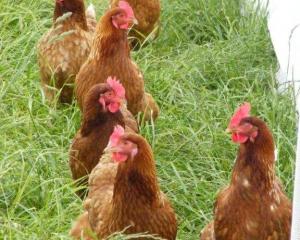
It has been nearly a year since Owen Booth sold his herd of Boer goats in Milton, calling time on a nearly 20-year career improving their genetics.
Now he is focusing on a flock of Wiltshire sheep and changed his stud name from Whitestone Boers to Whitestone Wiltshires.
He bought his first ewes from Tim Gow at Mangapiri Downs organic sheep farm in Western Southland in 2019.
Now, 39 mixed-aged ewes and 25 hoggets are set for the fourth lambing on the stud from September 5.
When the stud was launched, the goal was to "stabilise" 60 stud ewes on his 10ha farm, allowing for selection pressure, including keeping those on with less wool, Mr Booth said.
A selection criteria was to breed sheep which shed their wool before weaning.
At shedding time, Wiltshires looked "scruffy" but birds collected some of the wool to make their nests and the rest was free fertiliser, he said.
His breeding target was to reach 180% lambing.
The sheep breed was chosen because it allowed him "to take life a bit easier" because they shed their wool, did not require shearing and were worm resilient.
"They’ve never seen a drench gun."

"A Wiltshire’s resilience is incredible."
During his career, he had worked on commercial sheep farms in the South , running strong wool breeds including Coopworth, Perendale and Romney.
If he was commercial farming today, he would run a Wiltshire breed because of the price of wool and the cost to produce it.
Wiltshires were once marketed to lifestyle-block owners because they did not require shearing, but now commercial farmers were running the breed.
"More so in the North Island but it’s slowly moving south."
He knew of a North Canterbury commercial farm with a flock of 12,000 ewes.
Wiltshires were attractive to commercial farmers who could not foresee a return in the value of strong wool.
He had sold Wiltshire rams to commercial farmers in the South.
A commercial farmer in the South, who needed to build a new woolshed, told him he was considering running Wiltshires so he would not need to invest in new infrastructure.
Earlier this year, data from his flock started being recorded on Sheep Improvement Limited.

"Which is damn good weights."
The challenges of farming Wiltshires was they had limited handling because they did not require shearing, rarely entered the yards and did not get cast, which made them different from traditional breeds, which were used to more human contact.
"That took a wee bit of understanding at the start."
Feeding of Wiltshires needing to be monitored because they could "put a lot of condition on" compared to other breeds.
The weight of the ewes must be maintained in winter.
"We had an amazing autumn and had twice the cover we normally have — the growth was incredible."
He had an all-grass wintering system and "rationed" the diet of his ewes by giving them a day break of the same paddock since the end of May.
Now he was slowly increasing their feed intake as lambing approached.
He overfed his Wiltshires in the first year and had lambing issues.
"It was a learning curve — I overcooked them."














